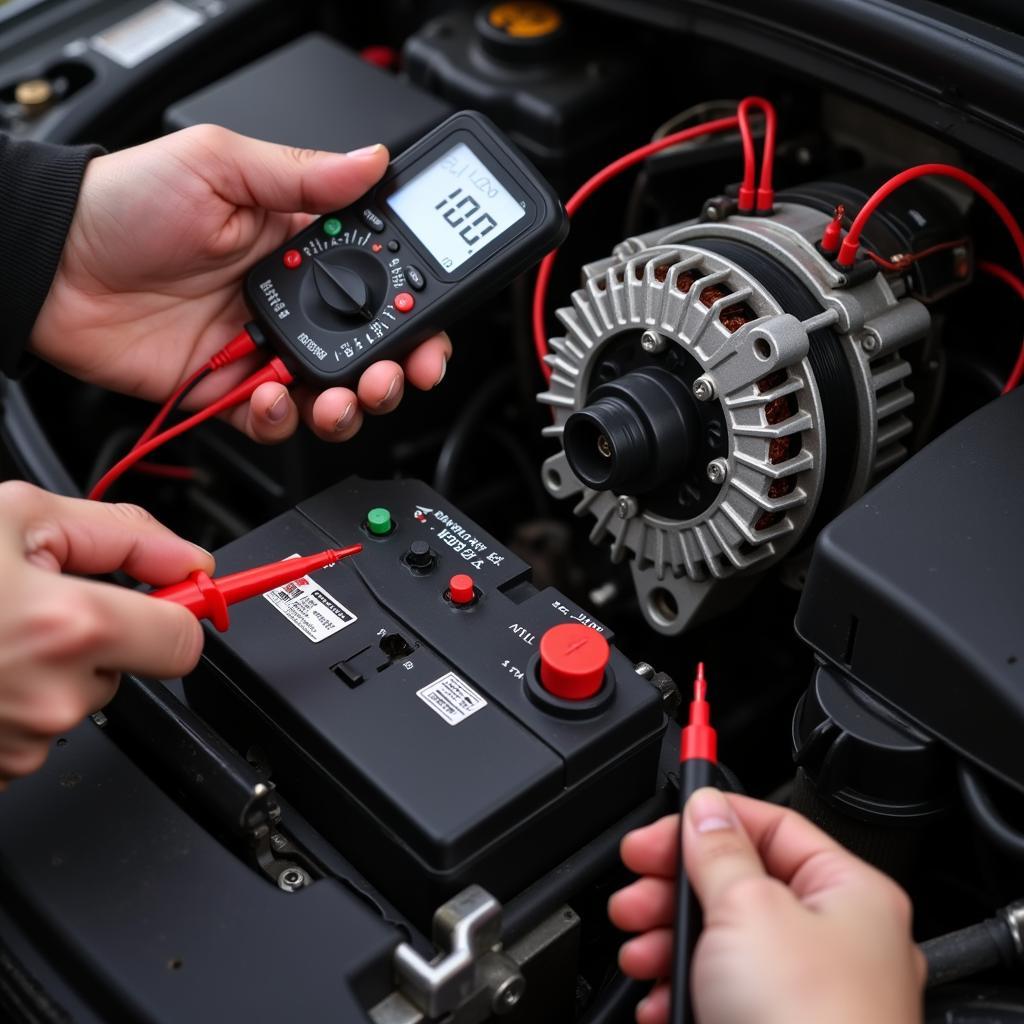Scratches on your car’s plastic parts can be unsightly and detract from its overall appearance. While deep scratches may require professional attention, minor scratches can often be fixed at home with a few simple tools and techniques. This article will guide you through the process of repairing plastic scratches on your car, helping you restore its pristine look.
Understanding Plastic Scratches
Before diving into the repair process, it’s crucial to understand the nature of plastic scratches. They can vary in depth and severity, affecting the repair method. Superficial scratches are typically confined to the surface layer and can be easily removed. Deeper scratches may penetrate the plastic’s protective layer, requiring more intensive repair techniques.
Assessing the Damage
The first step is to assess the severity of the scratches. Run your fingernail across the scratch. If you can feel a groove, it’s likely a deeper scratch requiring more extensive repair. Superficial scratches can be addressed with simple polishing methods.
Preparing for Repair
Gather the necessary supplies:
- Plastic Scratch Remover: Choose a product specifically designed for plastic surfaces. Avoid harsh chemicals that can damage the plastic.
- Microfiber Cloth: Use a clean, soft microfiber cloth to apply the scratch remover and polish the surface.
- Masking Tape: Use masking tape to protect surrounding areas from accidental damage during the repair process.
- Rubbing Compound: If the scratches are deeper, consider using a rubbing compound for a more abrasive approach.
Repairing Superficial Scratches
For superficial scratches, a simple polishing method can often suffice:
- Clean the Surface: Thoroughly clean the scratched area with soap and water to remove dirt and debris.
- Apply Scratch Remover: Apply a small amount of plastic scratch remover to a clean microfiber cloth.
- Polish the Scratch: Gently rub the scratch remover in a circular motion, applying moderate pressure. Continue polishing until the scratch is less noticeable.
- Buff and Wipe: Use a clean microfiber cloth to buff out any residue and wipe the surface clean.
Repairing Deeper Scratches
Deeper scratches may require a more aggressive approach:
- Clean and Prep: Clean the scratched area with soap and water and allow it to dry completely.
- Mask the Area: Use masking tape to protect surrounding areas.
- Apply Rubbing Compound: Apply a small amount of rubbing compound to a clean microfiber cloth.
- Rub and Polish: Rub the compound into the scratch using a circular motion, applying moderate pressure.
- Buff and Wipe: Use a clean microfiber cloth to buff out any residue and wipe the surface clean.
Tips for Success
- Patience is Key: Repairing plastic scratches can take time. Be patient and persistent, as it may require several rounds of polishing or rubbing compound application.
- Test on an Unseen Area: Before applying any product to the visible scratch, test it on a less noticeable area of the plastic to ensure compatibility.
- Professional Help: If the scratches are extensive or you’re unsure about the repair process, it’s always best to consult a professional automotive detailer or body shop.
“It’s important to choose the right products for the job. Using harsh chemicals or abrasive materials on plastic can cause more damage than good,” says John Smith, an experienced automotive detailer. “Always start with a gentle approach and gradually increase the intensity if needed.”
Conclusion
Fixing plastic scratches in your car can be an achievable DIY project. By following these steps and using the right tools and techniques, you can restore your car’s plastic parts to their original condition. Remember to assess the damage, choose the appropriate repair method, and be patient with the process. For more severe scratches or concerns, seeking professional help is always an option.
If you have any further questions or require assistance with car repairs, don’t hesitate to contact us.
AutoTipPro
+1 (641) 206-8880
500 N St Mary’s St, San Antonio, TX 78205, United States
Frequently Asked Questions (FAQs)
Q: Can I use toothpaste to fix plastic scratches?
A: While toothpaste is mildly abrasive, it’s not specifically designed for plastic and can leave a dull finish. It’s best to use a dedicated plastic scratch remover.
Q: What if the scratch is deep and doesn’t go away with polishing?
A: If the scratch is deep and doesn’t respond to polishing, it may require a professional repair, such as filling with a plastic filler.
Q: How often should I polish plastic parts on my car?
A: You can polish your car’s plastic parts as needed, especially if they show signs of scratches or dullness. Regular cleaning and polishing can help maintain the appearance of your vehicle.
Q: Can I use a heat gun to remove scratches from plastic?
A: Using heat guns on plastic can be risky, as it can cause warping or melting. It’s not recommended for fixing scratches.
Q: What about using sandpaper on plastic scratches?
A: Sandpaper can be used on plastic, but it requires expertise and caution. Using the wrong grit or applying too much pressure can permanently damage the plastic.







Leave a Reply